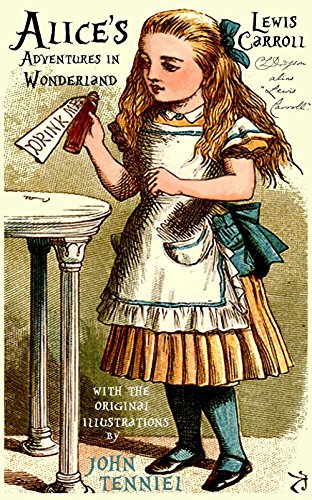Born as Charles Lutwidge Dodgson in 1832, Lewis Carroll was an extremely talented English writer, photographer, mathematician, and inventor. He exhibited exceptional skills in storytelling, poetry, writing, and singing from early childhood.
He was known in the literary circles as one of the best writers in the genre of literary nonsense. Caroll poured literary nonsense into his works of fiction including some of the best-loved poems and novels. Here we present the best five among them:
Alice’s Adventures in Wonderland
This novel was published in 1865 and is one of the most popular works of Carroll. It tells the story of a young girl called Alice. She falls through a rabbit hole and lands in a world of fantasy. This world is full of peculiar creatures. Alice’s Adventures in Wonderland is considered to be one of the best examples of literary nonsense.
It plays well with logic. This book garnered worldwide fame and was liked by children as well as adults. The narrative, imagery, structure, and characters of this book influenced many works in the fantasy genre.
Through the Looking-Glass and What Alice Found There
This novel is known simply as Through the Looking-Glass. It was published in 1871, although the year of publishing was mentioned as 1872. The book is the sequel to Alice’s Adventures in Wonderland. In the story, Alice enters a fantastical world once again.
This time, it is not through a rabbit-hole. She enters into the world of fantasy through a mirror. Just like a reflection that one sees in a mirror, everything in the world is reversed. For example, running makes one stationary and walking away from something brings the person towards it.
Jabberwocky
Written in the genre of literary nonsense, this poem is about the killing of a creature called The Jabberwock. It was included in Carroll’s 1871 novel Through the Looking-Glass, and What Alice Found There. This poem appears in an early scene when she encounters the characters White Queen and White King.
She finds a book written in a language that seems unintelligent. And realizes that she is in an inverted world and the verses are written in mirror-writing. She holds a mirror and is then able to read the reflected verse, which is Jabberwocky.
The Walrus and the Carpenter
This narrative poem also appears in the book Through the Looking-Glass, and What Alice Found There. It is recited by Tweedledum and Tweedledee to Alice in the fourth chapter. This poem has 18 stanzas and 108 lines written in an alternation of iambic trimeters and iambic tetrameters.
It has masculine rhymes throughout and has been written in the rhyme scheme ABCBDB. The rhyming and rhythmical scheme of the poem are of the traditional English ballad. In the poem, Walrus and Carpenter are eponymous characters recited to Alice by Tweedledum and Tweedledee.
Sylvie and Bruno
The first volume of this novel was published in 1889. Its second volume called Sylvie and Bruno Concluded was published in 1893. Together, they form the last novel published by Carroll during his lifetime. This novel comprises two main plots.
One is set in the real world and the other in a fantasy world called Fairyland. In the latter plot, there are many poems and elements of literary nonsense. It can be considered as a social novel set in Victorian Britain. The characters in the book discuss many concepts and different aspects of morality, religion, philosophy, and society.
